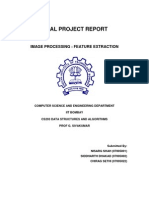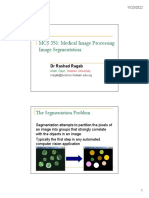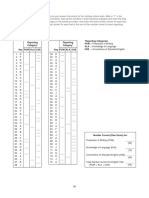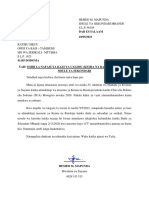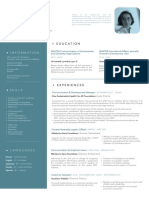Image Processing : Feature Extraction
CS-293 Guide: Prof G. Sivakumar
Compiled by: Siddharth Dhakad Chirag Sethi Nisarg Shah
�Problem Definition
Image processing is a field of signal processing in which input and output signals are both images (2D matrices). Feature extraction involves simplifying the amount of resources required to describe a large set of data accurately. Our project studies and implements various algorithms on feature extractions.
�The following Feature Extraction techniques were implemented
Edge Detection:
Sobels algorithm Cannys algorithm
Circle Detection:
Hough Transform
Line Detection:
Hough Transform
Corner Detection:
Trajkovics 8-neighbour algorithm
�Solution Design & Implementation
�Image
The images we handle are RGB type. Each pixel is a 32 bit integer. We have implemented a new data type for handling images called Picture.
�Picture Class
Constructors
From Picture From a 2D array From a filename
Saving & Loading images Grayscale Crop
�Picture Class
FILE SHOW IMAGE 2D ARRAY
IMAGE
EDIT PIXELS
GRAYSCALE
CROP
�Edge Detection
Edge detection is a terminology which aim at identifying points in a digital image at which the image brightness changes sharply or more formally has discontinuities. Edge Detection algorithms are broadly classified as
First order Higher order
�Original (Input) Image
�Sobel Edge Detector
Input Image
Gray-Scaled Image
Masking
Threshold
Edge Detected
�Canny Edge Detector
Input Image Gray-Scaled Image
Masking
Noise Reduction
Non-maxima Suppression
Threshold
Edge Detected
� For reducing noise, we used Gaussian Filter (Blurring Algorithm). On edge detected by first order detector, we used an algorithm called Non-maximal Suppression to have single/thin edges. After that, we used Stack data structure for path traversal for finding continuous edges.
�Manual Threshold
Automatic Threshold
�Original Image
Sobel
Canny Manual
Canny Automatic
�Canny v/s Sobel
Thin Edges Noise reduction Complete path High adjustability Thick Edges No blurring Discrete pixels Low adjustability
�Line & Circle Detection
Input Image Edge Detection Hough Transform
Detected Lines/Circles
Threshold
Path Traversal
In Circle Detection, we also included taking range of radius of circles to be detected as input to make the algorithm run faster.
�Original Image
Line Hough Transform
Original Image
Circle Hough Transform
�Corner Detection
Input Image
Original Image
Cornerness of each pixel
Threshold
Corner Detected
Corner Detected
�Threshold Selection
Manual:
User can set high-low thresholds for each operation performed during the algorithm.
Automatic:
By experimentation, we have found a heuristic to select a suitable threshold for any input image.
�The Hard Part
Selecting suitable threshold for any input image Deciding the proper class hierarchy for modular implementation Implementing path traversal and nonmaximal suppression algorithms
�Results & Analysis (Applied to standard test image)
�Original Image
Standard Canny Output
Our Canny Output
Standard Sobel Output
Our Sobel Output
�Original Image
Standard Canny Output
Our Canny Output
Automatic Canny Output
Our Sobel Output
�Original Image
Standard Output
Our Output
�Original Image
Standard Output
Our Output
�Original Image
Standard Output
Our Output
�Future Possibilities
Generalized Curve Detection Higher Order Edge Detection Some more shape based feature detection Optimizations in current algorithms Handling large size images Pattern recognition Face recognition
�What we learnt
Feature Extraction Algorithms Limitations of algorithms when applied to real life problems
Image Size Selecting Threshold Noise
Handling Images
Image types : RGB, ARGB, Raster, Vector
� Java/Swing Time Management Working as a team
